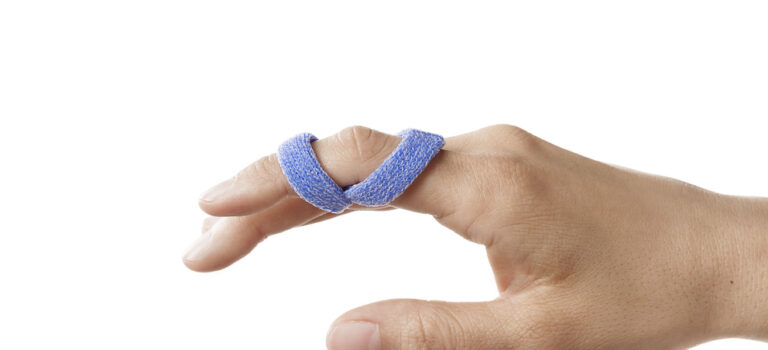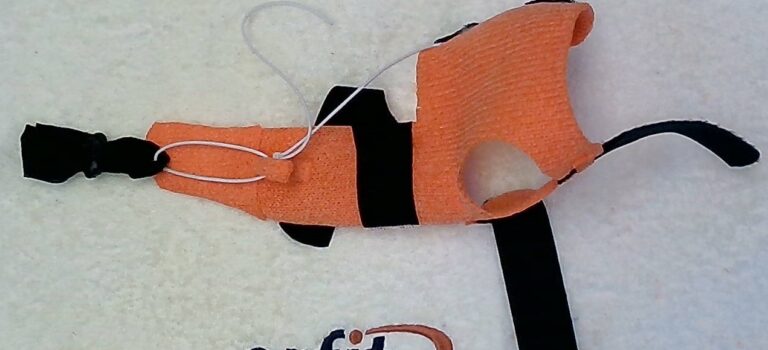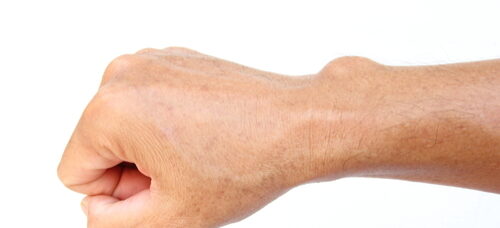
Repurposing Used or Scrap Splinting Materials
What can be done in the end with all of the orthoses that we fabricate for our patients?
After patients have completed their course of rehabilitation, they often have orthoses they no longer want or need.
While it is not suitable to repurpose these orthoses for other patients due to concerns for dirt and contamination, there are many creative ways to re-utilize the thermoplastic materials in projects around the clinic and /or house.
We share a few creative ways to repurpose the orthoses and also utilize scraps of thermoplastic material.
1. Clinical solutions
Idea 1: Roll small pieces of thermoplastic material into tiny therapy balls in different sizes which are useful for in hand and fine motor manipulation.


Idea 2: Enlarge and or reshape a handle for a patient with difficulty grasping smaller objects.

Idea 3: Enlarge a zipper pull for a patient with a weak and or painful pinch.

Idea 4: Create a personal set of desensitization dowels for hypersensitive fingers and scars.

2. Educational purposes
Idea 1: Save 1 -2 samples of each orthotic design to explain their function and purpose to patients and therapy students (provided you have room!).

Idea 2: Create a wall display of used orthoses.

Idea 3: Create a finger model with thermoplastic “bones” and connecting “ligaments” to explain finger anatomy. Have a student clinician do this as a project!

2. Creative solutions
Idea 1: Pencil or paintbrush holder: create colorful covers for simple pencil or paintbrush holders.

Idea 2: Create picture frames of all sizes depending on the size of the orthosis.

Idea 3: Planters: create colorful covers for glass jars and/or clay pots.

Idea 4: Wall decor: it is easy to mold thermoplastic into various hook shapes for holding keys and/or other items.

Have your patients help with repurposing their used orthoses into the creative projects shown above.
Here are some quick but important pointers:
- Make sure the thermoplastic material is not too hot so patients can handle it without burning their fingers.
- Turn the material inside out if you cannot remove the hook and loop strapping.
- Older materials can be very sticky so spread some lotion on the material or your fingers to improve workability.
- Instruct your patient in the project and/or make sure to supervise so there are no unnecessary injuries.
![]()

Written by Debby Schwartz, OTD, OTR/L, CHT
Physical Rehabilitation Product and Educational Specialist at Orfit Industries America.
Debby is a certified hand therapist with over 36 years of clinical experience. She completed her Doctorate of Occupational Therapy at Rocky Mountain University of Health Professions in 2010. She has worked at Orfit Industries America as Product and Educational Specialist since 2007.
Debby is also an adjunct professor at the Occupational Therapy Department of Touro University, School of Health Sciences, and at the Occupational Therapy Department at Yeshiva University, Katz School of Science and Health in NYC. She has written many book chapters in the field of hand therapy and multiple articles for hand therapy journals, including the ASHT Times and the Journal of Hand Therapy. She has published a new textbook on orthotic fabrication together with Dr. Katherine Schofield, entitled “Orthotic Design and Fabrication for the Upper Extremity: A Practical Guide”.
![]()
If you’d like to receive the latest product updates and interesting Orfit news, subscribe to our newsletter:



